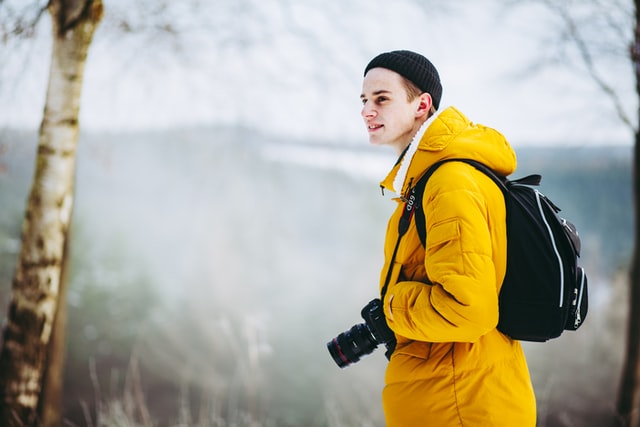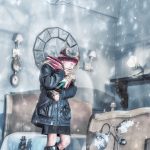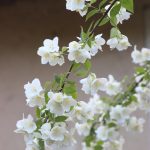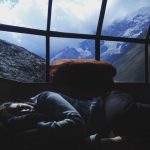Winter is a great time to take winter photos of the landscape. The best, in my opinion; Snow hides everything superfluous, emphasizes the shape of the landscape, and perfectly conveys the color of light in the minor gradations. Every year I wait for the first snow when the surrounding landscape is covered with a light, translucent white layer. Usually, the first good snow can be expected in November.
But for the soul to focus on creativity in the Winter Mountains, the body needs to provide maximum comfort and safety. This article is not about conquering snow-capped peaks or safety in the highlands. More experienced travelers and climbers can tell about it. I will only share my own winter hiking experience and my principles, which I follow when creating winter photos.
Contents
Planning to winter photos
I was once asked: “How do I choose the location?” When I thought about it, I realized that many factors influence my choice of location. First, I try a lot to see where other people travel. can create a basis for further research. But the more popular the place, the less I am interested in it. The trip is enjoyable not only for the shots but also for the feeling when you see something new for yourself. Moments of unity with nature are priceless, and they cannot be obtained in places where many tourists are and next to the parking lot with dozens of cars. Direct planning of winter photos trip begins with exploring the area on Google Maps and Google Earth. There I can find a specific place for further photography, taking into account the landscape features, light, ease of selection, and the track’s difficulty. So over time, I have a list of desired places. Each place at a particular time of year;
Before each hike, I make sure to look at the weather forecasts on various sites. It is Wind guru with a search on horseback and rp5.ua for predictions on settlements. This point is critical because the weather directly affects not only successful winter photos personnel but also their safety. Forecasts of air temperature and precipitation allow you to choose the necessary equipment and clothing. The main thing to know, if the autumn is below +18 and the sun, it does not mean that at the top of the ridge will be a summer resort; The weather is changeable. In the mountains, snow may fall in September.
The second is the wind. If Wind guru shows wind gusts of 20-25 m / s (40-50 knots), there can be no question about going uphill. And if the disappointing forecasts have caught me upstairs, then I go down. It was the case during my first trip winter photos captured to the Rodnya Mountains. The ridge was still unfamiliar to me, and I felt anxious because of the disappointing weather forecasts – strong winds and snow were approaching. I doubted for a long time how to do it, but I made the right decision and went down. Already at the foot ridge, I hid in a tent listened night to the howling of strong wind, the gusts of which swept across the valley. It was scary at one thought, like up there now.
It is essential to pay attention to the clouds. Low clouds on the winter photos capture ridge can cause trouble. If someone was at night and in the fog in the middle of a snowy landscape, he knows – it’s like in space, all the same in all directions and visibility a few meters. In such conditions, it is easy to get lost and get lost. On high ridges, there is a possibility to step on an unreliable snowdrift or cornice.
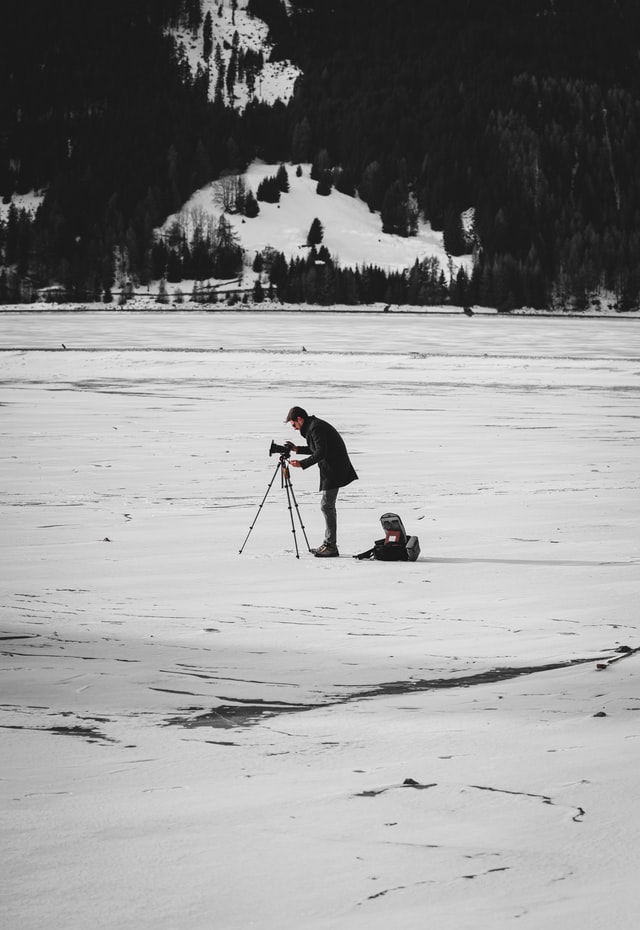
Route and camp for capture winter photos
We usually go in twos or threes. Also, it is even safer, although we do not climb on top. I remember my first full-fledged winter photos trip. We went with a friend with fresh snow and slightly overestimated their capabilities. The route, which can be overcome in a few hours in summer, we spent more than 10 hours taking winter photos. It was frosty, and at the end of fatigue and sleepless nights, I wanted to sleep so much. Because we were together, I found strength and went on. And to freeze from hypothermia is not necessary to be on top of Everest; the hill above Kolochava and frost -10 will be enough.
It was a good experience for taking winter photos, and now, if fresh snowfalls, we overcome the route to the shooting point in two days with an overnight stay before the main ascent. In winter, the day is short, and getting to the beginning of the track is always quite long. And on loose snow, even short routes can seem complicated. In such conditions, snowshoes do not always help well, but it is better with them. Once I got stuck in deep snow without snowshoes and made the only right decision – to return home. On harder snow and snow, snowshoes work very well.
When I go on a solo hike, I always take a few audiobooks with me. Last winter, I listened a lot to one of my favorite authors, Jack London. His stories about the North fit very well with the winter track in the snowy nature. During the trip, I can listen to up three books, which is essential to me because, at home, there is always a lot of work and time, not so much to read.
In addition to the correct route, no less important is the choice of location for the capture winter photos camp. It is better to choose it in advance, guided by maps or photos from the Web. The main thing is that this place was safe and protected from strong winds. A shovel and, preferably, a metal one are required to set up a winter camp. In the photo campaign, we stand base for 3-4 days in one place. It is essential that everything was reliable and comfortable, so “trampling the snow with snowshoes or a seat” is not an option.
In winter, the tent can be set up in places that are not suitable for summer, for example, right on the slope. Of course, not on the highlands’ slopes, not on snow, and not under avalanche-prone slopes! They worked together for a long time to dig a massive hole in a snowdrift among the spruces. They set up a wall and set up a tent. It was excellent protection from the wind, and this place served us as many as three times during the winter.
Weather and light
Winter photos or photography, for me, is not just a fixation of the landscape; it is a way to convey to the viewer something exciting and unusual. It can be unusual weather, good light, or a creative look at the surrounding landscapes. To do this, I follow the weather forecasts, although you cannot rely on them entirely. But the amount of precipitation and wind strength show well. If I want to photograph a winter forest, I expect heavy snowfalls. Probably the best option is to go to the point of shooting before the rain and wait there. First, snowfall is difficult and dangerous. Secondly, good snow on the trees lasts one day in sunny weather. In the sun or strong wind, snowfalls very quickly from the trees. We have found such frustration in the mountains more than once, so it is challenging to catch snow-covered trees in good light.
The trip to well-remembered. For four long days, we waited in the hunt for total fog and snow. Out of boredom, I wanted to climb to the ceiling. On the 5th day, there was an intense frost, and finally, the sun came out. In the morning, the trees were just incredible, completely white! And in the evening, the snow fell from them well, and they began to look completely unaesthetic.
If fresh snow is not expected or quickly fell from the trees, you can start shooting above the forest. There, wind and snow create extraordinary sculptures. For example, Gorgany is a good option for such surveys, given the mountains’ not very significant height.
Endless white spaces can strike on high ridges. Snow-covered slopes perfectly convey the mountains’ shape, and the inflation on the hill creates precise lines. Upstairs is more likely to see snow and good light. Especially wonderful twilight in winter, which begins an hour, or even earlier, before sunrise; when the weather is good, I start taking pictures when it’s still dark. With long shutter speeds (2-3 minutes), the camera captures the slightest light that the human eye cannot see.
Shooting tips
Get up early and go to the shooting point in any weather – in the mountains it is very changeable and good light can be for one minute.
Start shooting in the morning, when it is still dark, and the horizon is just beginning to shine – long shots will pleasantly surprise you; in the evening, the clouds can interestingly “ignites” 30-40 minutes after sunset;
Look for shooting points in advance to take pictures instead of looking for angles in good light.
If your angle is perfect and the weather is clear, take a series of shots in 30-60 minutes, and you will see how different in color and lighting the images will be.
In the thick of twilight, take test shots at high ISOs and open apertures to choose a suitable composition. With these settings, you will have relatively short shutter speeds, saving battery power and time, but the image quality will be poor. When the exact composition is found, set the minimum ISO value and close the aperture to the average values for maximum photo quality.
Use the camera’s remote control to take pictures at shutter speeds longer than 30 seconds.
Warm the batteries inside the gloves.
All these matters if you use a tripod :).
Equipment
But first of all, safety! After all, neither photographic equipment nor creative talent makes little sense if to freeze in the mountains.
Everyone started with something. And my start was not too fabulous. I began to learn the first basics of winter nights long before I started going to the mountains. And in general, I did not go hiking then. In those days, I was exclusively engaged in bird photography. At one point, I began to prepare for the winter shooting of birds of prey. And for this, I had to spend the night in a tent among the steppe fields. That’s when I had a question about equipment, clothes, and what to choose not to freeze on cold winter nights.
Tent
This is my house and shelter from the weather throughout the hike. It must be reliable and comfortable.
The first 4-season tent was Fjord Nansen, who eventually began to surrender. In the first winter mountain hikes, his shortcomings became apparent to me as a photographer. In the middle, it was not very spacious. The walls of the inner tent and vestibule sagged heavily. When the door opened, the snow fell directly into the sleeping bag. All these nuances can be tolerated, you say, but I no longer agree with that. In my photo hikes, I can spend seven days in the tent, and it is important to me that the stay in it was comfortable and the sleeping bag and clothes were dry.
Over time, I replaced it with a 3-season tent MSR and tried to use it in the winter. For one night, the weather forecasters reported -20 ° C, and I decided to go with this tent to check myself and the equipment. I survived, what can you say about the tent. Over time, small holes formed in the awning, most of them along the arches. And later, one section of the frame cracked in the cold. That’s why I don’t advise anyone to experiment like that. In my opinion, in long photo hikes, passionate light walking is not always appropriate, so I no longer save on the tent’s weight. Now I use the tent Exped Orion II, which has already shown itself well in the snow and the wind.
Inside the tent, the temperature can be several degrees higher. But due to good protection from the wind, you feel much more comfortable and warm in the tent. To create the necessary security, the exterior awning of the tent should be as low as possible. Additionally, you can warm up with gas heaters or warmers. I do not use this and while warming myself with a sleeping bag and warm clothes.
I learned that the tent should be kept in reasonable condition to be set up as quickly as possible. For this purpose, tent designs when the internal and external awnings are established at the same time are very successful. In any tent, you need to make sure that the laces are neatly folded. After all, it will be very unpleasant when in bad weather you see before setting up the tent that all the laces are tangled and formed a dozen knots. If the weather is windy, you first need to secure the two corners with swings or trekking poles and then begin to put the frame when setting up a tent. Otherwise, the tent may fly away.
For sleeping: sleeping bag and rug
More than once, I heard the opinion that down sleeping bags is not suitable for the Carpathians. I do not quite understand why. My first sleeping bag was inexpensive and with a synthetic filler. He performed his functions well but weighed almost 2 kg and occupied a half-backpack. And if the synthetics get wet, it will be no better to “warm” than damp down. Now my down weighs less than a kilogram and takes up two to three times less space. But the down is short-lived and eventually gets lost.
Often the sleeping bag can get wet from condensation during the hike. Therefore, on sunny frosty days, it is essential to throw the sleeping bag in the sun. You can go straight to the snow. The main thing is to fix it well so that it does not fly away.
It is not recommended to dry things in a sleeping bag. Yes, it causes excess moisture, but this is the only way to dry wet items if they are not entirely dark. I always take shoe insoles in my sleeping bag at night – it’s nice that at least some part of the shoe is warm in the morning.
I remember on my first winter hike in the mountains; I took two regular care mats. In volume, they were like my whole backpack and kept warm so-so – the snow beneath me melted until the end of the hike. At that time, my friend already had an inflatable mat with filler. Then I was convinced of its efficiency and convenience, so I took Expend down Mat 9. Now I sleep in the snow like at home on a mattress. The main thing is that the inflatable mat must be filled.
Clothes and shoes
I used to have no specialized hiking clothes and went on my first hike in the mountains in plain clothes. It was autumn and quite good weather, albeit with the wind. But then I froze terribly. When he returned, he immediately bought a warm jacket and pants with a membrane. They still serve me, reliably protecting me from wind, moisture, and cold. This is especially critical in winter. Without the proper gloves or shoes, you can easily miss a few fingers on your limbs at the end of the hike. And this is at best. Now in my “wardrobe,” clothes and shoes on the membrane, fleece and down clothes, thermal underwear, and two pairs of gloves. I pay special attention to shoes. They must be waterproof, with insulation, and have a stock for a warm sock. After all, I once had the experience when shoes turn into two pieces of ice – the feeling is not pleasant! There may be discussions about insulation. But after the last hike, when the temperature was -10 or lower, and at the point of shooting, I had to stand for at least an hour, the boots with insulation and a warm sock did not seem excessive to me. Of course, the second option – some shoes for trekking and another pair for shooting. But this is for those who have a too big and light backpack.
Food
“The main thing is to have a fire,” a man we met on the trail while climbing the mountain once told us. From this statement, we enjoyed the whole hike, during which a strong wind blew and blew everything with snow; have time to dig a tent.
I bought my first gas burner when I was photographing birds. Being in the cold for a long time, the need for hot food becomes obvious. And when the weather is brutal on the street, of course, not to the fire and not to look for firewood; with the burner, you can cook anywhere and anytime. I even take it sometimes in long radial outputs. I use cooking systems that are very economical and convenient. Earlier in the winter, I almost always cooked in the vestibule with a slightly open lock. This has become a problem in my new Exped Orion tent because the vent has a mesh that my previous tents did not have. Moisture in the form of steam settles on the grid and freezes in the cold, covering the ventilation hole with ice crust. This causes an increase in humidity in the closed tent and, as a result, a wet sleeping bag and frost or moisture on the inner tent. Now, weather permitting, I cook with the vestibule open or outside.
Also, the burner is more environmentally friendly. Dryness in the forest is just as important as green trees. In high-altitude parking lots, a lot is often lit for fire, which is generally forbidden to cut down. Due to people’s passion for fire, nature suffers, and tourist parking lots become less attractive from an aesthetic point of view.
With water in winter, everything is simple – it is everywhere in the form of snow. This makes me very happy because you do not need to link the camp’s location to water sources. Of course, melted snow is not as tasty and needs more gas. But when it is freezing, it makes no sense to stock up on water from an existing source – the water will freeze overnight. And there will be two options: cut the container or carry the ice home.
There is also a thermos – a valuable and important thing in the campaign, despite its volume and weight. I often take it with me when a long track is expected. It allows you to quickly quench your thirst and keep warm without unpacking your backpack. I would not recommend eating snow, because it can earn a sore throat.
The cold season is also great because you can take ordinary food with you on short hikes, and they will not spoil. On long hikes, I prefer dried food because it is lighter and takes up less volume. Of course, it must be boiled or steamed before use.
Photography
Of course, there is no exceptional winter photography. But the better it is, the better it works under challenging conditions. Modern professional digital technology holds up well in frosty weather. The weak point is lithium-ion batteries, which do not like the cold, so they should always be kept in internal pockets. I carry four batteries with me on the hike, two of which (main and spare) I stay warm to always ready for use. Not very high-quality cheap analogs of branded batteries usually work very poorly in the cold or almost do not work.
Keep in mind the condensation that forms when you bring equipment from the cold into a warm room or even a tent. I always keep the camera in a photo backpack and a warm room; the equipment is standing in the afternoon before I get it. After all, no matter how waterproof the chamber is, condensation can form on the case’s inner walls.
Installing a tripod in deep snow can be a challenge. Tripod sockets similar to those mounted on ski or trekking poles can be handy here. They can be made even from any improvised materials.
But a winter hike is not just about trials and good shots. These are, first of all, unique emotions and feelings. Since childhood, I love quiet winter evenings, and in the mountains, they are unsurpassed. When the last light of the sun goes out, I enjoy the extraordinary silence, which happens only in winter, among the endless snow-covered spaces; I stare at the crystal clear starry sky, I rejoice in the moonlight shining in the snow.
I hope my experience will be helpful to you for capturing winter photos snd Safe travel for you!

